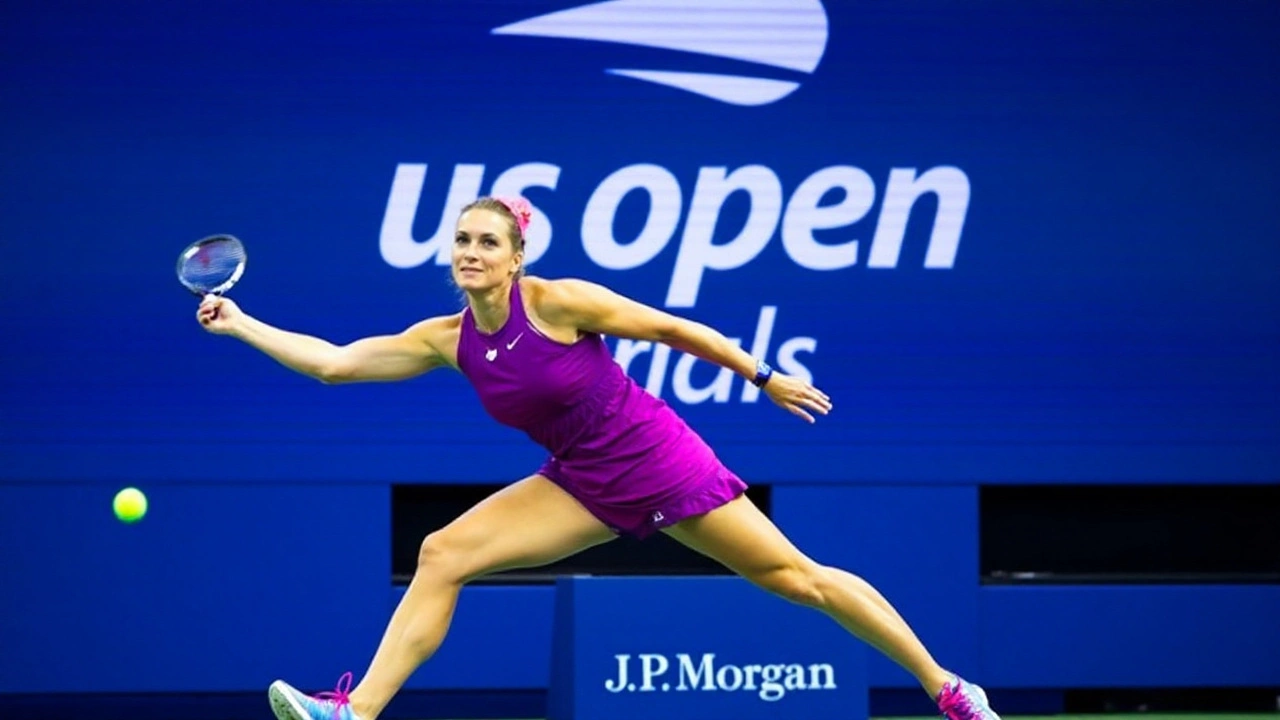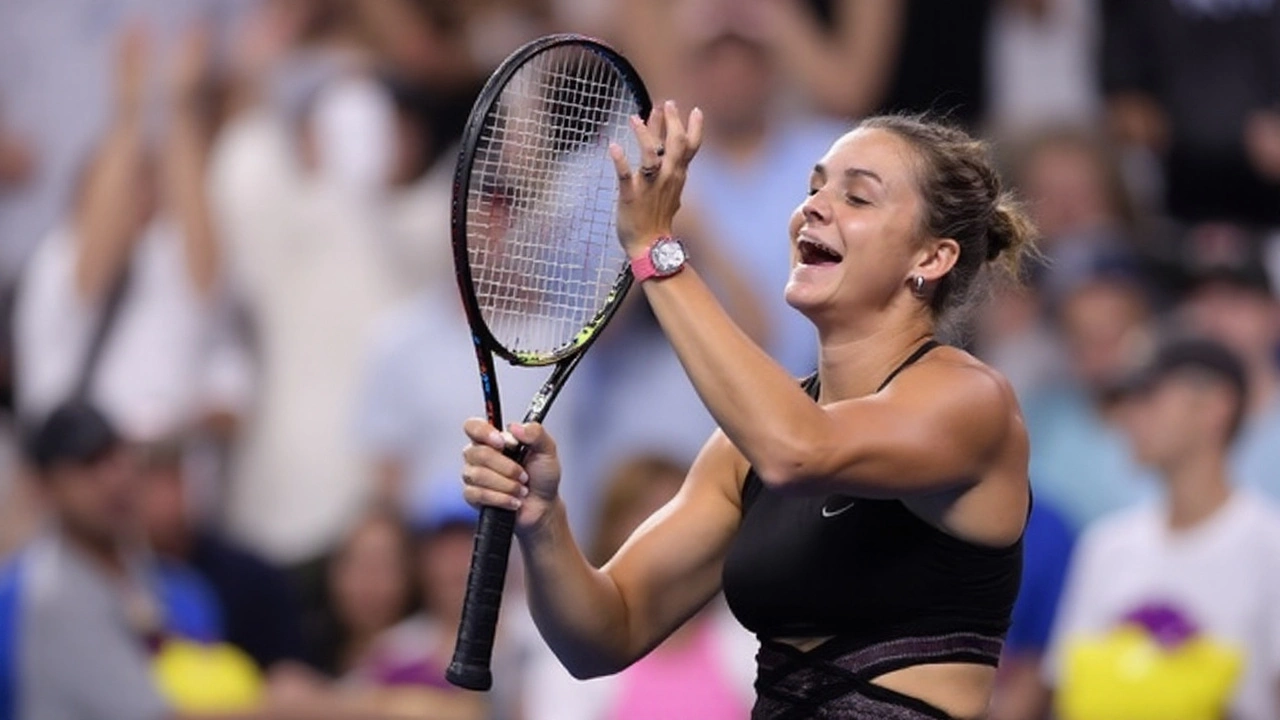A match with a proposal and a reminder that sport lives beyond the lines
You expect big serves and bruising rallies at the US Open. You don’t expect a marriage proposal to briefly steal the show. But midway through Aryna Sabalenka’s third-round win over Leylah Fernandez on Friday night, a fan in the stands at Louis Armstrong Stadium dropped to one knee. His partner said yes, the crowd roared, and for a few seconds the 14,000-seat bowl felt more like a wedding reception than a night session in Queens.
Sabalenka didn’t flinch. The world No. 1, defending her title in New York, reset and finished the job 6-3, 7-6 (2). The second set tightened as Fernandez—New York’s adopted underdog since her 2021 final run—scrapped and stretched rallies, but Sabalenka’s first-strike tennis and a crisp tiebreak sealed it. No drama on the scoreboard, plenty of it in the seats.
Afterwards, Sabalenka smiled at the novelty of it. “I think it’s the first time someone proposed during my match,” she said in the press room, adding that she tried not to grin through points as the stadium buzzed. She wished the couple well, then tossed a playful aside toward boyfriend Georgios Frangulis: “No pressure.” The line landed because the mood in Armstrong was light; it was a rare interruption that added warmth, not chaos, to a major match.
Moments like this feel bigger in tennis because the sport thrives on quiet. Baseball or basketball can ride out a stadium moment without missing a beat, but tennis is the only show where 10,000 people will hold their breath on contact. That’s part of why the proposal resonated: it broke the hush, drew a communal cheer, and then handed the night back to the athletes who are trained to live inside that silence.
On court, Sabalenka looked like the version that tore through last year’s draw. She took the opening set by punching early holes in Fernandez’s service games and keeping points short with a heavy forehand. Fernandez, a lefty counter-puncher who thrives on redirecting pace, tried to drag the rallies wide and yank Sabalenka off balance. It worked in patches, especially late in the second set, but the Belarusian’s serve—when landing—closed doors before the Canadian could crack them open.
The tiebreak told the story. Sabalenka stepped in, cut off angles, and forced errors with depth. Fernandez had her chances earlier in the set, pressing on return and making the world No. 1 hit extra balls. But as has become the case with Sabalenka in 2024 and beyond, she managed the temperature: less rush on second serves, more margin cross-court, and no panic when the crowd tilted toward the underdog.
Fernandez’s bond with New York remains strong. The 21-year-old knows how to pull fans into a fight—quick feet, quick hands, and a game that looks just a little bigger under the Armstrong lights. She left to loud applause, which felt earned. In a draw this deep, she pushed the top seed to problem-solve rather than just tee off, and for a few games had Sabalenka aiming too fine.
The proposal didn’t derail the match, but it did change the tone. Fans in the middle tiers pointed, phones came out, and a wave of applause washed down toward the court as the couple shared a quick kiss. Security didn’t need to intervene, and neither player appeared bothered. If anything, the energy bumped up a notch—smiles in the aisles, a few murmurs between points, and a livelier hum that carried into the tiebreak.
Sabalenka’s life off the court has been in sharper public focus this season. She made her relationship with Frangulis public in April, a few weeks after the death of her former partner, Konstantin Koltsov, in March 2024. She has talked about the hard days that followed and how “normal moments” helped reset her footing. Seeing a couple take a leap in a tennis stadium wasn’t just a cute subplot; for Sabalenka, it touched a part of a year that demanded resilience far from scoreboards and seedings.
Performance-wise, the Belarusian has grown more pragmatic. The raw power is unchanged, but the choices are cleaner: fewer go-for-broke forehands from defensive positions, more serves into the body to blunt returners like Fernandez, and better patience when an opponent starts looping balls into the corners. That’s how you avoid three-set scraps in week one. It’s also how you make a second week at a major feel routine rather than risky.
Next up is Cristina Bucsa, the Spain-based baseliner who reads the court well and absorbs pace cleanly. Bucsa doesn’t bring headline power, but she has the kind of movement and depth that can test Sabalenka’s shot tolerance if the first-serve percentage dips. Expect longer exchanges, more down-the-line changes to break patterns, and a few cagey returns chipped low to force Sabalenka to hit up from awkward heights.
Louis Armstrong Stadium remains the perfect stage for this kind of night. It’s massive but still intimate, close enough for fans to track every facial expression, and raucous without feeling unruly. When a life moment breaks out in the upper deck, everyone senses it. Tennis doesn’t always welcome noise mid-rally, but it absolutely embraces humanity between them.
Proposals at sports events aren’t new—scoreboards and kiss cams practically invite them—but tennis sees fewer of them for a simple reason: the code of quiet. That’s why Friday’s scene stood out. It threaded the needle: a personal celebration that didn’t hijack the match, a burst of joy that reminded people why they came out on a late-summer night in New York in the first place.
Sabalenka’s message afterward captured that balance. She kept her edge during points, then opened the door to the human moment after the handshake. It’s a line she’s walked all season: playing with force, living with empathy, and finding a way to let both exist in the same two-hour window.
By the time the couple took their seats again, Sabalenka had tucked away the final points, the handshake came, and the scoreboard confirmed what most expected: the top seed is into the last 16 with momentum intact. The champion’s path will get steeper now, but Friday night showed something useful for the rounds ahead—she can handle the tennis and the noise around it, without letting either swallow the other.

What the result means and what’s next
The straight-sets win keeps Sabalenka on schedule, sparing the extra miles that add up at a major. It also keeps her anchored to the identity that’s made her a force in New York: start fast, punch first, and trust the serve to slam shut any late doors. Bucsa will try to pry one open. The crowd, likely still buzzing about a ring and a yes in the upper tiers, will happily watch both stories play out at once.
